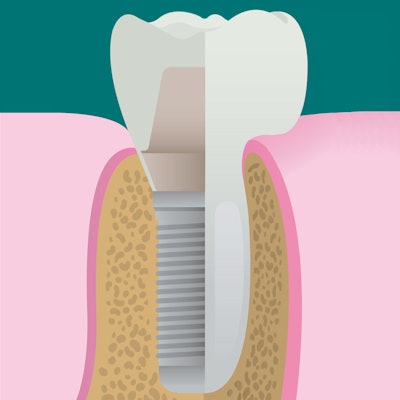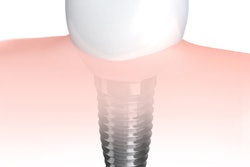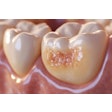
Dental imaging is getting better all the time, but how do you know that your implant planning and treatment tools are accurate? Top dental implantology experts sought to answer that question at the International Team for Implantology's ITI Consensus Conference in Amsterdam.
The conference, which takes place every five years, focuses on creating foundational guidelines for several areas of modern implantology, including digital planning and placement. To come up with their consensus, the conference participants reviewed dozens of clinical studies that included thousands of implants.
This year's ITI attendees published their research and findings in Clinical Oral Implants Research on October 17. Below are five, key takeaways regarding the use of cone-beam CT (CBCT), digital planning, digital impressions, and static computer-aided surgery for implant planning and placement.
1. Digital works well for single implants
Digital impressions from intraoral scanners are about as accurate as conventional imaging -- but only when it comes to single or adjacent implants.
The authors recommended the routine use of digital impressions for single implant restorations. However, they did not recommend digital impressions for larger, interimplant spans.
"The accuracy of digital impressions is negatively influenced with an increase in the interimplant span between multiple implants in partially dentate and edentulous situations," wrote the authors, led by Daniel Wismeijer, DDS, PhD, from the Academic Center for Dentistry Amsterdam.
2. Digital may not be ideal for edentulous cases
Intraoral scans and digital impressions may work well for one implant, but digital tools may not be ideal for use with edentulous patients. For instance, flapless static computer-aided implant surgery may lead to clinicians placing implants outside of keratinized mucosa of edentulous, the authors noted.
As a result, they concluded that static computer-aided implant surgery is better for partially edentulous cases than fully edentulous ones. They also did not recommend that clinicians routinely use intraoral digital impressions of edentulous jaws.
3. CBCT is the go-to tool for 3D imaging
“To optimize digital implant impressions for each clinical situation, device-specific intraoral scanning protocols must be followed.”
Cone-beam CT (CBCT) is the go-to choice for 3D dental implant site assessment, the authors wrote. This is because CBCT can provide cross-sectional images with high accuracy at a relatively low dose of radiation. Furthermore, field-of-view (FOV) size, voxel size, and partial rotations do not negatively affect CBCT linear measurements.
"A voxel size of 0.3 - 0.4 mm3, the smallest FOV, and if possible, partial rotations should be used for preoperative implant treatment planning in order to reduce radiation dose exposure," the authors wrote. "This should result in similar image quality as scans comprised of smaller voxel size or larger FOV."
It is also important to note that CBCT can occasionally be off by more than 1 mm. As a result, the authors recommend planning for a margin of error.
"A minimum safety margin of 2 mm to relevant adjacent anatomic structures should be considered," they wrote.
4. Following protocol is essential
Human error is real and can be problematic when using digital tools for implant planning and treatment. Therefore, the authors recommended closely following manufacturer guidelines and protocol for your digital tools.
"To optimize digital implant impressions for each clinical situation, device-specific intraoral scanning protocols must be followed," the authors wrote.
5. Don't rely on just one tool
Many digital and conventional tools are available for implant planning, so it might not be best to rely on just one method. The authors specifically suggested using scan bodies for digital implant impressions and aligning surface scans with 3D volumetric data. They also recommended using static computer-aided implant surgery as an ancillary tool in your digital imaging arsenal.
"Static computer-aided implant surgery should be considered as an additional tool for comprehensive diagnosis, treatment planning, and surgical procedures," they wrote.



















